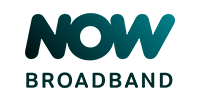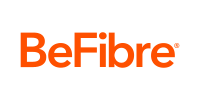











Our broadband coverage checker searches all types of fibre broadband including full fibre, cable, fibre to your home and part fibre where you live.
Enter your full postcode and select your address.
We'll find you the best deals and providers in your area.
Sign up to your new broadband provider and start saving.
Cable.co.uk price checks the latest deals in the market to save you time and money.

We work hard to secure exclusive deals you won't find anywhere else.

We're independent which means we're able focus on the right deal for you.

Safe and easy to use with no complicated registration forms to fill in.

Superfast broadband – Superfast broadband does have a specific definition. However, going back to the early 2010s, when fibre broadband first emerged, it's been used to describe the most widely available type of fibre broadband: standard fibre, technically known as FTTC. FTTC stands for 'fibre to the cabinet' and refers to the fact that fibre optic cables only run from the cabinet on your street to the network, while the run of cable between the cabinet and your home is copper phone line. Copper is much slower than fibre, meaning the maximum speed of 'superfast fibre' is around 75Mbps which, increasingly, is making the term 'superfast' look a bit daft.
Full Fibre – Unlike 'superfast' FTTC fibre broadband (described above), Full Fibre is fibre optic all the way to your home. That means it can go faster. Much, much faster. In fact, on paper, there is nothing stopping Full Fibre from delivering 10Gbps – that's 10,000Mbps. We're not there yet, though. The fastest widely available Full Fibre broadband is around 944Mbps currently, which is still a lot faster than almost anyone needs. You may also find faster speeds with both Virgin Media, and some small, local providers known as 'altnets'. But Virgin Media isn't technically full fibre.
Cable fibre broadband (Virgin Media) – Virgin Media is very much its own thing. It's neither superfast broadband (FTTC) nor Full Fibre (FTTP or fibre to the premises). Instead, Virgin Media uses it's own mixed-medium cable network that's part fibre and part copper to deliver its broadband. It's not, however, limited in the same way 'super fast' fibre is because there is no part of the network where data is being carried over solely copper cable.
Fibre broadband is currently available to the majority of UK households (around 98%). Figures vary for Full Fibre because Ofcom's reported figures mix together Openreach and smaller networks. That figure is 59%, but realistically, if you want to get Full Fibre from Sky, BT and so on, it's more like one in three households that can currently get it.
There are several reasons why some homes still can’t get fibre broadband. One is the cost of installing a network, particularly in rural areas where houses are few and far between. Likewise, if you live in a city or suburb, some areas are so densely populated that there simply isn’t room to add capacity for fibre connections. Some purpose-built flats and apartment blocks are also poorly serviced because of the way they’re internally wired.
So the vast majority of households can get fibre broadband, but the actual speed you can get will vary, depending on where you live. If you can get Full Fibre, where you live does not matter, since there is no part of the network running on copper, and nothing to slow it down. With full fibre, and with Virgin Media, you will almost always get the speed advertised, and in many cases your actual speed will be faster. Here's a snapshot of the speeds you can expect with the different technologies:
| Type of fibre | Also known as | Advertised speeds | Actual speed you'll get |
|---|---|---|---|
| Superfast fibre | FTTC | 36, 61Mbps (or thereabouts) | 20-75Mbps |
| Full Fibre | FTTP | 100, 150, 500, 900Mbps (or thereabouts) | As advertised |
| Cable fibre | Virgin Media | 54, 132, 264, 362, 516, 1130Mbps | As advertised |
Use our fibre broadband checker to find out exactly what’s available in where you live. If you can’t get fibre, there are still some speedy options in the form of mobile broadband.
Up until 2020, our advice would have been that ADSL (old-fashioned, standard broadband with a top speed of around 17Mbps) is perfectly okay for small households with limited internet needs. That's not our advice anymore, and a basic fibre package should be considered a bare minimum for all households. ADSL isn't even available to most of us anymore anyway, with providers only offering it to households that can't get anything else – mostly in very rural locations.
And now, here is in 2024, things are moving forward again, with providers focusing on pushing those who can get it onto faster, full fibre packages. This is because old infrastructure costs money to maintain. In an ideal world, from where the providers are concerned, full fibre would be the only game in town. It's not available to everyone yet, but if you can get it, should you?
Our advice is if you're lucky enough to be able to get Full Fibre, you should. Here's why:
According to the latest Ofcom data, the average speed from fibre-to-the-cabinet (FTTC) connections in the UK is 55.57Mbps, while the average of full-fibre connections is 149.2Mbps. Bear in mind though that these measurements tend to be more representative of the speed people choose on average than the potential performance of each of these technologies.
The following table, which shows the broadband speed needed per task, should help you decide whether a fibre broadband deal is right for you. Keep in mind you might be using more than one device at once.
| Activity | Speed Required |
|---|---|
| Browsing social media | 1Mbps |
| Browsing the internet – reading content, online shopping, etc. | 2Mbps |
| Streaming Netflix in SD | 3Mbps |
| Streaming Netflix in HD | 5Mbps |
| Streaming Netflix in 4K | 25Mbps |
| Playing games online | 3-6Mbps |
| Downloading games | The faster the better |
| Streaming games | 35Mbps |
One of the best ways to find out your current broadband speed is to run our broadband speed test while you’re at home and connected to your wifi. We'll tell you the download and upload speeds you're receiving with your existing broadband provider.
Our guide to broadband speeds will give you further information about the type of broadband connection that’s right for your needs.
Superfast broadband speeds are ideally suited to households with up to five people who regulary use broadband.



Compare all deals
Full fibre broadband is the next generation of broadband in the UK. It's full fibre to the home and it's fast, very fast. Here are the most popular deals right now:



Compare all deals
Looking for speedy broadband on a budget? No problem – we've got brilliant fibre broadband at prices to suit your wallet.



Compare all deals
Yes, particularly if you’ve got an eye for a bargain. Search for deals, and look out for bundles that package together services, such as TV and mobile. That way you can save a lot on your monthly bills. It’s possible to find cheap fibre and Full Fibre broadband deals, but they come and go, so be sure to keep your eyes open.
Virgin Media provides the fastest widely available broadband service in the United Kingdom, boasting a top download speed of 1130Mbps.
Full Fibre broadband isn't as widely available as fibre broadband – only available to around one in three households, versus 98% of households for fibre. If you can get Full Fibre though, we strongly advise you do, since there is no ccost advantage to opting for a slower fibre deal.
Use our free broadband speed checker. You can check you're getting the speed you're paying for, but for an accurate reading, make sure you do so vai a cable to your computer as wifi speeds have their own limits.
Yes, it’s possible to get a fibre connection without a landline. Full Fibre tends to be supplied without a landline as standard now, and increasingly, you'll need to ask your provider for a landline if you still need one.
Use our switching reminder and we'll email you when your deal is coming to an end so you don't lose out!
Set reminder